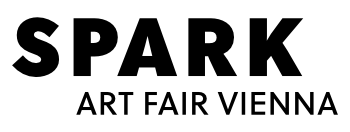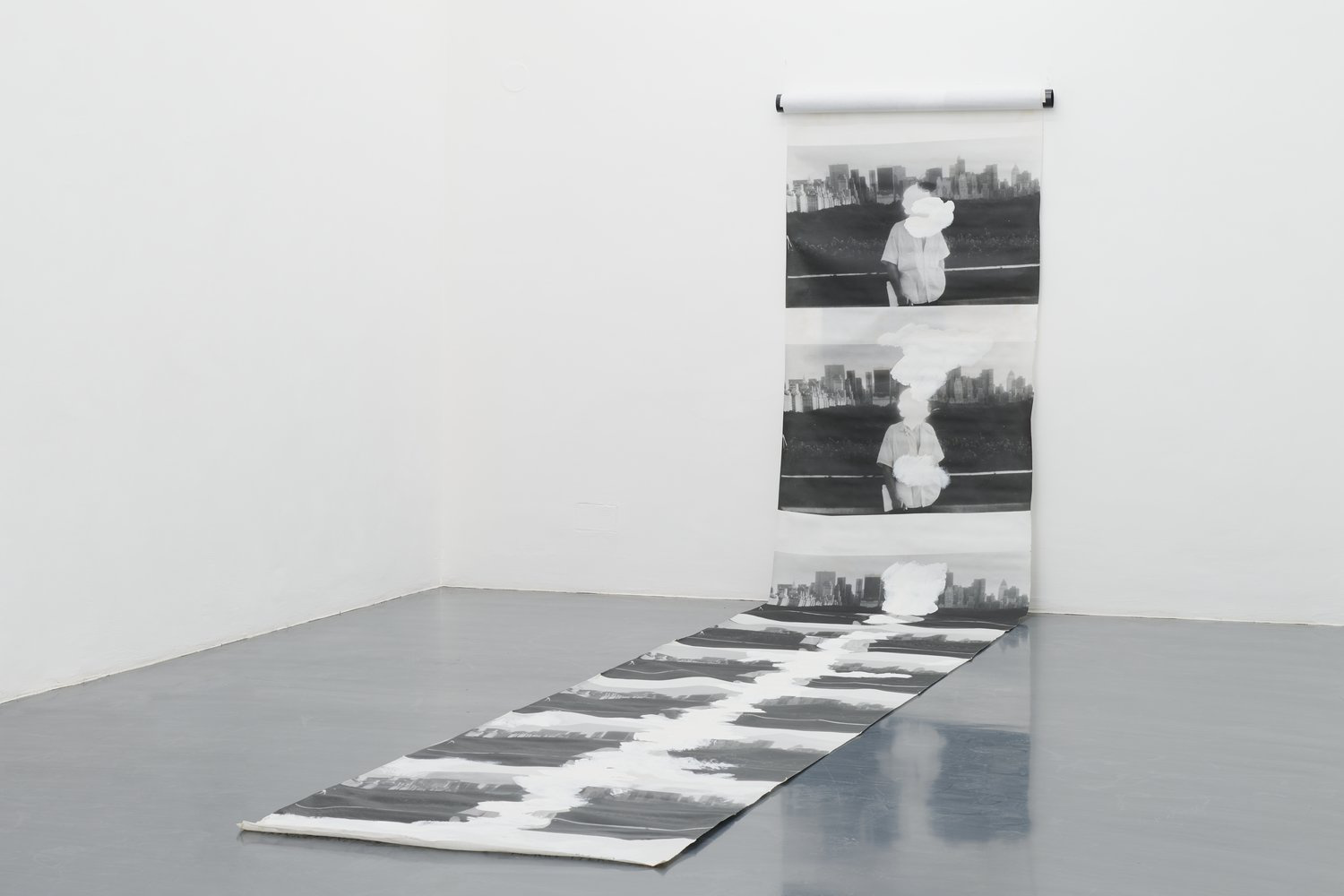Layr
Stano Filko
Stano Filko is the key figure in Slovakian postconceptual and multi-, or rather anti-disciplinary art practice from the 1960s until today. From 1965, he began making so-called pneumatic sculptures, as well as designing utopian architectures. In 1965, with the artists Zita Kostrovà and Alex Mlynàrčik, he co-authored the HAPPSOC Manifesto, taking place on the threshold between artistic agency and society. In 1981, he emigrated to Germany in his Škoda 120, which he exhibited at documenta 7, Kassel in the installation Liebe zur Ontologie (ENG. Love For Ontology). A year later, he lived in New York and only returned to Bratislava in 1990 where he tirelessly worked in Bratislava until his death in 2015.
In the 2nd half of the 1970s, he started to build his cosmology on the three colours: 3. White – absolute spirituality (later White Ontology), 2. Blue – Cosmology, 1. Red – Biology, later called the three dimensions (3.4.5.D). Having experienced the failure of all institutions during his lifetime, Filko became an institution himself, which materialized in his studio on Snežienkova Street in Bratislava from 1990 onwards. In his holistic conceptual worldview, he kept using inspiration from art, philosophy, visual culture, science and technology as well as various mythologies. His approach was combining an obsessive creativity with a unique imagination and ability to deliver abstract thoughts.
Text by Søren Grammel (director Kunstverein Heidelberg)
Biography
Public collections include the Museum of Modern Art New York (USA), Tate Modern London (UK), Kunstmuseum Basel (CH), Guggenheim Collection (USA), Slovak National Gallery (SK), LINEA Collection Bratislava (SK), Folkwang Museum (D), Kröller-Müller Museum (N), Generali Foundation (A), , Kontakt. Art Collection (A), Kunstmuseum Liechtenstein (LIE), Pomeranz Collection (A) as well as the National Gallery Prague (CZ).
Layr
Layr was founded by Emanuel Layr in Vienna, Austria in 2011 in order to continue and enhance the agenda of his former gallery LayrWuestenhagen (2005-2011). The gallery program focusses on contextualizing and confronting notions and artistic manifestations of the conceptual with the relevant social, political and cultural issues of today. Based in a city with a long history of oscillation between hemispheres—East and West, North and South—, the program strives for interplay between artists from different generations and cultural or discursive backgrounds. The gallery is the exclusive representative of the estate of the late Slovak neo-avantgardist Stano Filko, as well as of Belgian-American artist Cécile B. Evans. Further evidence of the gallery’s precise and multi-layered focus can be found in its fruitful and ongoing collaborations with artists like Anna-Sophie Berger, Julien Bismuth, Andy Boot, Plamen Dejanoff, Gaylen Gerber, Lena Henke, Benjamin Hirte, Lisa Holzer, Birgit Megerle, Lili Reynaud-Dewar and Philipp Timischl.
In September 2015 Layr moved into a two story space in Vienna’s city centre, and from 2017 to 2020 has been developing and running a subsidiary in Rome, Italy, adding yet another dimension of exchange, expansion and integration to its profile. In Spring 2021, the gallery opened another temporary gallery space in Vienna.

+43 1 9451791
Clara Pohl
+4367764511358
Stano Filko
Stano Filko is the key figure in Slovakian postconceptual and multi-, or rather anti-disciplinary art practice from the 1960s until today. From 1965, he began making so-called pneumatic sculptures, as well as designing utopian architectures. In 1965, with the artists Zita Kostrovà and Alex Mlynàrčik, he co-authored the HAPPSOC Manifesto, taking place on the threshold between artistic agency and society. In 1981, he emigrated to Germany in his Škoda 120, which he exhibited at documenta 7, Kassel in the installation Liebe zur Ontologie (ENG. Love For Ontology). A year later, he lived in New York and only returned to Bratislava in 1990 where he tirelessly worked in Bratislava until his death in 2015.
In the 2nd half of the 1970s, he started to build his cosmology on the three colours: 3. White – absolute spirituality (later White Ontology), 2. Blue – Cosmology, 1. Red – Biology, later called the three dimensions (3.4.5.D). Having experienced the failure of all institutions during his lifetime, Filko became an institution himself, which materialized in his studio on Snežienkova Street in Bratislava from 1990 onwards. In his holistic conceptual worldview, he kept using inspiration from art, philosophy, visual culture, science and technology as well as various mythologies. His approach was combining an obsessive creativity with a unique imagination and ability to deliver abstract thoughts.
Text by Søren Grammel (director Kunstverein Heidelberg)
Biography
Public collections include the Museum of Modern Art New York (USA), Tate Modern London (UK), Kunstmuseum Basel (CH), Guggenheim Collection (USA), Slovak National Gallery (SK), LINEA Collection Bratislava (SK), Folkwang Museum (D), Kröller-Müller Museum (N), Generali Foundation (A), , Kontakt. Art Collection (A), Kunstmuseum Liechtenstein (LIE), Pomeranz Collection (A) as well as the National Gallery Prague (CZ).
Layr
Layr was founded by Emanuel Layr in Vienna, Austria in 2011 in order to continue and enhance the agenda of his former gallery LayrWuestenhagen (2005-2011). The gallery program focusses on contextualizing and confronting notions and artistic manifestations of the conceptual with the relevant social, political and cultural issues of today. Based in a city with a long history of oscillation between hemispheres—East and West, North and South—, the program strives for interplay between artists from different generations and cultural or discursive backgrounds. The gallery is the exclusive representative of the estate of the late Slovak neo-avantgardist Stano Filko, as well as of Belgian-American artist Cécile B. Evans. Further evidence of the gallery’s precise and multi-layered focus can be found in its fruitful and ongoing collaborations with artists like Anna-Sophie Berger, Julien Bismuth, Andy Boot, Plamen Dejanoff, Gaylen Gerber, Lena Henke, Benjamin Hirte, Lisa Holzer, Birgit Megerle, Lili Reynaud-Dewar and Philipp Timischl.
In September 2015 Layr moved into a two story space in Vienna’s city centre, and from 2017 to 2020 has been developing and running a subsidiary in Rome, Italy, adding yet another dimension of exchange, expansion and integration to its profile. In Spring 2021, the gallery opened another temporary gallery space in Vienna.

